| Revision as of 18:02, 27 December 2003 editKokiri (talk | contribs)Extended confirmed users6,101 editsm updated link← Previous edit | Latest revision as of 11:25, 21 October 2024 edit undoMonkbot (talk | contribs)Bots3,695,952 editsm Task 20: replace {lang-??} templates with {langx|??} ‹See Tfd› (Replaced 3);Tag: AWB | ||
| (398 intermediate revisions by more than 100 users not shown) | |||
| Line 1: | Line 1: | ||
| {{short description|Lake in Central Switzerland}} | |||
| :''Alternate uses: ]'' | |||
| {{Use dmy dates|date=June 2018}} | |||
| {{other uses}} | |||
| {{Infobox lake | |||
| | name = Lake Lucerne | |||
| | native_name ={{native name|de|Vierwaldstättersee}} | |||
| | etymology = | |||
| | image = Vierwaldstaettersee.jpg | |||
| | caption = View of Lake Lucerne from the ] | |||
| | image_bathymetry = Karte_Vierwaldstättersee.png|caption_bathymetry = map | |||
| | coords = {{coord|47.0194|8.4011|region:CH_type:waterbody|display=inline,title}} | |||
| | location = ] | |||
| | lake_type = ], recent regulation<ref group=note>The weir in Lucerne keeps the water level {{convert|2|–|3|m|abbr=on}} above the natural average, see {{webarchive|url=https://web.archive.org/web/20140514230548/http://www.vif.lu.ch/reusswehr_08_layout_2_1_.pdf |date=14 May 2014 }}</ref> | |||
| | inflow = {{plainlist| | |||
| *] | |||
| *] | |||
| *] | |||
| *]}} | |||
| | outflow = ] | |||
| | catchment = {{convert|2124|km2|abbr=on}} | |||
| | basin_countries = Switzerland | |||
| | length = {{convert|30|km|abbr=on}} | |||
| | width = {{convert|20|km|abbr=on}} | |||
| | area = {{convert|113.6|km2|abbr=on}} | |||
| | depth = {{convert|104|m|abbr=on}} | |||
| | max-depth = {{convert|214|m|abbr=on}} | |||
| | volume = {{convert|11.8|km3|abbr=on|lk=out}} | |||
| | residence_time = 3.4 years | |||
| | shore = {{convert|143.7|km|abbr=on}} | |||
| | elevation = {{convert|434|m|abbr=on}} | |||
| | frozen = in the 17th and 19th century; Lucerne Bay and Lake Alpnach in 1929 and 1963 | |||
| | islands = Altstatt-Insel | |||
| | cities = {{plainlist| | |||
| *] | |||
| *] | |||
| *] | |||
| *] | |||
| *] | |||
| *] | |||
| *] | |||
| *] | |||
| *] | |||
| *] | |||
| *]}} | |||
| | sections = {{plainlist| | |||
| *] | |||
| *] | |||
| *] | |||
| *] | |||
| *] | |||
| *] | |||
| *] | |||
| *] | |||
| *] | |||
| *]}} | |||
| | reference = | |||
| <ref name=hdsll>{{HDS|8666|Vierwaldstättersee|author=Hans Stadler|date=27 February 2013}}</ref> | |||
| | website = http://www.lakelucerne.ch | |||
| | pushpin_map=Canton of Obwalden#Canton of Lucerne#Canton of Nidwalden#Canton of Schwyz#Canton of Uri#Switzerland#Alps | |||
| | pushpin_label_position= bottom | |||
| | embedded = {{Infobox mapframe |wikidata=yes |zoom=10 |coord={{WikidataCoord|display=i}}}} | |||
| }} | |||
| '''Lake Lucerne''' ( |
'''Lake Lucerne''' ({{langx|de|Vierwaldstättersee}}, literally 'Lake of the four ]' (in English usually translated as ''forest cantons''), {{langx|fr|lac des Quatre-Cantons}}, {{langx|it|lago dei Quattro Cantoni}}) is a ] in central ] and the fourth largest in the country. | ||
| == Geography == | |||
| ] | |||
| The lake has a complicated shape, with several sharp bends and four arms. It starts in the south–north bound ] Valley between steep cliffs above the ''Urnersee'' from ] towards ] to the north before it makes a sharp bend to the west where it continues into the ''Gersauer Becken''. Here is also the deepest point of the lake with {{convert|214|m|abbr=on}}. Even further west of it is the ''Buochser Bucht'', but the lake sharply turns north again through the narrow opening between the ''Unter Nas'' (lower nose) of the ] to the west and the ''Ober Nas'' (upper nose) of the ] to the east to reach the ''Vitznauer Bucht''. In front of ] below the Rigi the lake turns sharply west again to reach the center of a four-arm cross, called the ''Chrütztrichter'' (Cross Funnel). Here converge the ''Vitznauer Bucht'' with the ''Küssnachtersee'' from the north, the ''Luzernersee'' from the west, and the ''Horwer Bucht'' and the ''Stanser Trichter'' to the south, which is to be found right below the northeast side of the Pilatus and the west side of the Bürgenstock. At the very narrow pass between the east dropper of the ] (called ''Lopper'') and ] the lake reaches its southwestern arm at ] on the steep southern foothills of the Pilatus, the ''Alpnachersee''. The lake drains its water into the Reuss in ] from its arm called ''Luzernersee'' (which literally translates as ''Lake of Lucerne''). | |||
| The entire lake has a total area of 114 km<sup>2</sup> (44 sq mi) at an elevation of {{convert|434|m|abbr=on}} a.s.l., and a maximum depth of {{convert|214|m|abbr=on}}. Its volume is 11.8 km<sup>3</sup>. Much of the shoreline rises steeply into mountains up to 1,500 m above the lake, resulting in many picturesque views including those of the mountains Rigi and Pilatus. | |||
| The Reuss enters the lake at Flüelen, in the part called ''Urnersee'' (''Lake of Uri'', in the ]) and exits at Lucerne. The lake also receives the ] at Brunnen, the ] at ], and the ] at Alpnachstad. | |||
| The lake is a complicated shape, with bends and arms reaching from the city of ] into the mountains. It has a total area of ], an elevation of 437 m (1434 ft), and a maximum depth of 214 m (702 ft). Its volume is ]. Much of the shoreline rises steeply into mountains up to 1500 m above the lake, resulting in many picturesque views. | |||
| It is possible to circumnavigate the lake by train and road, though the railway route circumvents the lake even on the north side of the Rigi via ]. Since 1980, the ] leads through the ] in order to reach the route to the ] in just half an hour in ] right south of the beginning of the lake in Flüelen. | |||
| It borders on the three original Swiss ]s of ], ], and ], as well as the ], thus the name. Many of the oldest communities of Switzerland are along the shore, including ], ], ], ], ], ], ], and ]. In addition, the meadow of the ], traditional site of the founding of the ], is on the southeast shore of the lake. | |||
| Steamers and other passenger boats ply between the different villages and towns on the lake. It is a popular ] destination,<ref>Archived at {{cbignore}} and the {{cbignore}}: {{Citation|title=Switzerland - Lake Lucerne - Aerial Drone Video in 4K|url=https://www.youtube.com/watch?v=Y5jAvY1Nb1c|language=en|access-date=2021-05-10}}{{cbignore}}</ref> both for native Swiss and foreigners, and there are many hotels and resorts along the shores. In addition, the meadow of the ], traditional site of the founding of the ], is on the ''Urnersee'' shore. A 35 km commemorative walkway, the ], was built around the Lake of Uri to celebrate the country's 700th anniversary in 1991. | |||
| The ] enters the lake at ] (in the canton of Uri, the part called ''Urnersee'') and exits at Lucerne. The lake also receives the ] (at Brunnen) ] (at Buochs), the ] (at ]). | |||
| ] surveying the lake-bed (during the construction of a pipeline) from 2019 to 2021 found the remains of a ] village with artifacts dating to around 1000 BC.<ref name=":0">{{Cite web|last=Davis-Marks|first=Isis|title=3,000-Year-Old Submerged Settlement Discovered in Switzerland|url=https://www.smithsonianmag.com/smart-news/archaeologists-uncover-bronze-age-settlement-switzerland-180977651/|access-date=2021-05-07|website=Smithsonian Magazine|language=en}}</ref> Later, the new findings indicated that the area was settled 2,000 years earlier than historians previously thought.<ref name=":0" /> | |||
| It is possible to circumnavigate the lake by road, though the route is slow, twisted, and goes through tunnels part of the way. Dozens of steamers ply between the different towns on the lake. It is a popular ] destination, both for native Swiss and foreigners, and there are many hotels and resorts along the shores. | |||
| Lake Lucerne borders on the three original Swiss ]s of ], ], and ] (which today is divided into the cantons of ] and ]), as well as the ], thus the name ''Vierwaldstättersee'' (lit.: Lake of the Four Forested Settlements). Many of the oldest communities of Switzerland are along the shore, including ], ], ], ], ], ], ], and ]. | |||
| ] in ], southwards, with ] on the left shore on the right]] | |||
| Lake Lucerne is singularly irregular and appears to lie in four different valleys, all related to the conformation of the adjoining mountains. The central portion of the lake lies in two parallel valleys whose direction is from west to east, the one lying north, the other south of the ridge of the ]. These are connected through a narrow strait, scarcely one kilometre wide, between the two rocky promontories called respectively ''Unter Nas'' and ''Ober Nas'' (Lower and Upper Nose). It is not unlikely that the southern of these two divisions of the lake—called ''Buochser Bucht''—formerly extended to the west over the isthmus whereon stands the town of ], thus forming an island of the Bürgenstock. The west end of the main branch of the lake, whence a comparatively shallow bay extends to the town of Lucerne, is intersected obliquely by a deep trench whose south-west end is occupied by the branch called ''Alpnachersee'', while the north-east branch forms the long arm of ], ''Küssnachtersee''. These both lie in the direct line of a valley that stretches with scarcely a break in between the ] and the ]. At the eastern end of the Gersauer Becken, where the containing walls of the lake-valley are directed from east to west, it is joined at an acute angle by the arm of Uri, or the ''Urnersee'', lying in the northern prolongation of the deep cleft that gives a passage to the ], between the ] and the ].<ref name = Ball>], ''The Alpine guide, Central Alps'', p. 153, 1866, London</ref>{{unreliable source?|certain=yes|reason=quite outdated, indeed, and thereore often wrong from a more educated point of view!|date=January 2016}} | |||
| ] southwards]] | |||
| The Urnersee occupies the northernmost and deep portion of the great cleft of the Reuss Valley, which has cut through the Alpine ranges from the ] to the neighbourhood of ]. From its eastern shore the mountains rise in almost bare walls of rock to a height of from {{convert|3000|to|4000|ft|m|abbr=on}} above the water. The two highest summits are the ] and the ] (2078 m). Between them the steep glen or ravine of the ] descends to ], the only village with ] right on the shore on that side of the Urnersee. On the opposite or western shore, the mountains attain still greater dimensions. The ] is succeeded by the ], and farther south, above the ridge of the Scharti, appear the snowy peaks of the ] and the ] (2,928 m). In the centre opens the Reuss Valley, backed by the rugged summits of the ] and ].<ref name = Ball/> | |||
| The breadth of these various sections of the lake is very variable, but is usually between one and two miles (3 km). The lake's surface, whose mean height above the sea is 434 metres, is the ] of the cantons of Uri, Obwalden and Nidwalden. Originally the lake was susceptible to variations in level and flooding along its shoreline. Between 1859 and 1860, the introduction of a ] in the Reuss in the city of Lucerne, just upstream from the ], allowed the lake level to be stabilised.<ref name=hdsll/> | |||
| The culminating point of the lake's drainage basin, as well as Central Switzerland, is the ] at 3,630 metres above sea level.<ref>{{cite map |publisher= ] |title= 1:25,000 topographic map |url= http://s.geo.admin.ch/09f2b039d |access-date= 27 July 2014 }}</ref> | |||
| {{clear left}} | |||
| ==Name== | |||
| The name of ''Vierwaldstättersee'' is first used in the 16th century. Before the 16th century, the entire lake was known as ''Luzerner See'' "Lake Lucerne", as remains the English (and partly Italian, as ''Lago di Lucerna'') usage.<ref name=hdsll/> | |||
| The (three) "{{Lang|de|]|italic=no}}" (lit.: "forested sites/settlements", in English usually translated as ''forest cantons''<ref>for the translation "forest canton" see e.g. Encyclopedia Britannica, 7th ed., vol. 21 (1842), .</ref>) since the 14th century were the confederate allies of ], ] and ]. The notion of "Four Waldstätten" (''Vier Waldstätten''), with the addition of the ], is first recorded in the 1450s, in an addition to the "Silver Book" of ] of Lucerne. | |||
| The nine different parts of the lake have individual designations:<ref name=hdsll/><ref>{{cite news |url=http://www.beobachter.ch/fileadmin/dateien/pdf/Infografiken/Infografik_Vierwaldstaettersee_BeoN_08-10.pdf |title=Vierwaldstättersee: Über sieben Becken... |language=de |publisher=] |series=BeobachterNatur |issue=8/2011 |location=Zurich, Switzerland |date=7 October 2011 |access-date=7 October 2016}}</ref> | |||
| *''Urnersee'' ("Lake of Uri"): The first part of the lake, at the mouth of the Reuss between ] and ]. | |||
| *''Gersauer Becken'' ("Basin of Gersau") next to ] below the ] massif is the deepest part of the lake. | |||
| *''Buochser Bucht'' ("Bay of Buochs"): The bay of Bouchs, where the ] enters the lake. | |||
| *''Vitznauer Bucht'' ("Bay of Vitznau"): The part between the ] and Rigi. | |||
| *''Alpnachersee'' ("Lake of Alpnach"): the almost separate, southern arm below the southern mountainside of ] near ]. | |||
| *''Stanser Trichter'' ("Funnel of Stans"): The part north of the Pilatus, west of Bürgenstock, and in front of ] and ]. | |||
| *''Küssnachtersee'' ("Lake of Küssnacht"): The most northern arm, west of the Rigi with ] at its northern end. | |||
| *''Chrütztrichter'' ("Cross Funnel"): The meeting point of ''Stanser Trichter'', ''Luzernersee'', ''Küssnachtersee'', and ''Vitznauer Bucht''. | |||
| *''Luzernersee'' ("Lake of Lucerne"): in German usage now limited to the bay at Lucerne as far as Meggenhorn, with its effluence of the Reuss. | |||
| {{multiple image|perrow = 3|total_width=800 | |||
| |align=right | |||
| |header = Lake Lucerne and surroundings on the Swiss National Map (1:25'000) | |||
| |image1=1150 Luzern.jpg | |||
| |image2=1151 Rigi.jpg | |||
| |image3=1152 Ibergeregg.jpg | |||
| |image4=1170 Alpnach.jpg | |||
| |image5=1171 Beckenried.jpg | |||
| |image6=1172 Muotathal.jpg | |||
| |image7=1190 Melchtal.jpg | |||
| |image8=1191 Engelberg.jpg | |||
| |image9=1192 Schächental.jpg | |||
| |footer = | |||
| }} | |||
| ==Settlements== | |||
| {| class="wikitable" | |||
| |- | |||
| ! Left shore<ref group=l>At the entry of the ]: the western, later southern shore.</ref> | |||
| ! Right shore | |||
| |- | |||
| | valign=top | <!-- left side of lake from entry of the Reuss--> | |||
| *] | |||
| **] | |||
| **] (Seedorf) | |||
| **] (Bauen) | |||
| **] | |||
| **] with ] and ] | |||
| *] | |||
| **] | |||
| **] | |||
| **] | |||
| **] | |||
| **] (Ennetbürgen) | |||
| **] (Stansstad) | |||
| **] | |||
| **] (Stansstad) | |||
| **] | |||
| *] | |||
| **] | |||
| *] | |||
| **] | |||
| *] | |||
| **] | |||
| **] (Horw) | |||
| **] (Horw) | |||
| | valign=top | <!-- right side of lake --> | |||
| *] | |||
| **] | |||
| **] | |||
| *] | |||
| **] | |||
| **] | |||
| **] | |||
| *] | |||
| **] | |||
| **] | |||
| **] | |||
| *] | |||
| **] | |||
| **] (Küssnacht) | |||
| *] | |||
| **] | |||
| |- | |||
| | colspan=2 style="text-align:center;" | ] | |||
| |} | |||
| {{reflist|group=l}} | |||
| == Navigation == | |||
| ]]] | |||
| ] | |||
| The lake is navigable, and has formed an important part of Switzerland's transport system for many centuries, and at least since the opening of the first track across the ] in 1230. This trade grew with the opening of a new ] road across the pass in 1830. This road had its northern terminus at ] at the extreme eastern end of the lake, and the lake provided the only practical onward link to ], and hence the cities of northern Switzerland and beyond.<ref name=asme>{{cite web | url = http://files.asme.org/ASMEORG/Communities/History/Landmarks/1287.pdf | title = Paddle Steamboat Uri | publisher = ] | date = 5 September 2008 | access-date = 11 September 2012 | url-status = dead | archive-url = https://web.archive.org/web/20140903060704/http://files.asme.org/ASMEORG/Communities/History/Landmarks/1287.pdf | archive-date = 3 September 2014 }}</ref><ref name=svgg>{{cite web | url = http://www.lakelucerne.ch/de/ueber-uns/unternehmen/geschichte-sgv.html | title = Geschichte SGV | language = de |trans-title=SGV History | publisher = SGV | access-date = 12 September 2012}}</ref> | |||
| Whilst the development of Switzerland's road and rail networks has relieved the lake of much of its through traffic, it continues to be used by a considerable number of vessels, both private and public. Much of this usage is tourist or leisure oriented, but the lake continues to provide practical public and cargo transport links between the smaller lakeside communities. | |||
| Passenger boats of the ] (SGV) provide services on the lake, including many run by historic ]s. The SGV serves 32 places along the shore of the lake, with interchange to both main line and mountain railways at various points. Under separate management, the ] provides a ] service between ], on the south bank of the lake, and ] on the north. | |||
| Cargo ]s, to a local design known as ''Nauen'', are still used on the lake. Some have been converted for use as party boats. Other barges are used by the gravel dredging industry that operates on the lake, using large ]s to obtain ] and ] for use in the ].<ref>{{cite web | url = http://www.wabag.ch/htm/1574/de/Unternehmen.htm | title = WABAG Kies AG | language = de | publisher = WABAG Kies AG | access-date = 10 September 2012}}</ref><ref>{{cite web | url = http://www.arnoldcoag.ch/ | title = Arnold & Co. AG | language = de | publisher = Arnold & Co. AG | access-date = 11 September 2012}}</ref> | |||
| ==Cultural references== | |||
| ], c. 1850, ], ]]] | |||
| ]'s ] derives its name from an 1832 description of the first movement by poet and music critic ], who compared it to moonlight shining upon Lake Lucerne. | |||
| ] uses this{{clarify|date=September 2012}} in his ] Section A: Sunrise over the Alps. | |||
| ==Rowing==<!-- change to "Sport" or some such when other disciplines are added --> | |||
| Lake Lucerne has twice been used as a venue for the ]: in ] and then in ].<ref>{{cite web |title= Event Information |url= http://www.worldrowing.com/events/1908-european-championships/event-information |publisher=] |access-date=30 June 2018}}</ref><ref>{{cite web |title= Event Information |url= http://www.worldrowing.com/events/1926-european-championships/event-information |publisher=] |access-date=30 June 2018}}</ref> The nearby ] has since 1933 been used for rowing regattas instead. | |||
| == Tourism == | |||
| ] behind Lake Lucerne]] | |||
| On the way south, the English discovered the mountains of central Switzerland. Several spa and bathing resorts such as Weggis or Gersau were created. In 1871, the very first rack railway in Europe, the Vitznau-Rigi Railway, was opened. In 1889 the steepest cog railway in the world was built from Alpnachstad to ]. Mark Twain described an ascent to the Rigi, which led to the blossoming of Swiss tourism in the United States in the 19th century. One of the largest steamship fleets in Europe operates with five steamships on Lake Lucerne. | |||
| In the area surrounding the lake and on terraces at medium height (for example Morschach and Seelisberg) there are numerous places for tourists. The Rigi, Pilatus, the Bürgenstock, the ], the Buochserhorn, and the two legends, the Urirotstock and the Fronalpstock are attractive panoramic mountains near Lake Lucerne. Most of them can be reached by mountain railways, some of which have their valley station near boat stations on the lake. | |||
| There are numerous locations on the lake that are important in Swiss cultural and tourism history: Rütli, Tellsplatte, Tell Chapel, Carving Tower of Stansstad, Neu-Habsburg, Schillerstein, Treib, Astrid Chapel (Küssnacht) and Meggenhorn Castle. | |||
| === Watersports === | |||
| Different sports are possible in some separate areas due to the water and wind conditions. The lake is accessible from boat and yacht harbors, to lake resorts and pools (e.g. the Lido pool in Lucerne, built in 1929 by Arnold Berger). Therefore, the lake can be easily accessible from both shores. The See-Club Luzern was founded in 1881, which is now Switzerland's largest rowing club, as well as the Reuss Luzern rowing club (Ruderclub Reuss Luzern) in 1904. The Lucerne Yacht Club (Yachtclub Luzern) has existed since 1941 and has been running since 1966 a boathouse and buoy field on Churchill-Quai in Lucerne. | |||
| The Brunnen water sports club (Wassersportclub Brunnen), founded in 1958, held on Lake Lucerne in the first years of its existence international motorboat races and water ski championships. In 1965 the association chose a new name for the club: Lake Lucerne Water Sports Club (Wassersport-Club Vierwaldstättersee). The Central Switzerland Motorboat Club (Motorbootclub Zentralschweiz) was established in 1980 and the Hergiswil Water Sports Club (Wassersportclub Hergiswil) in 1986. SchweizMobil has created a canoe tour across Lake Lucerne between Brunnen and Gersau. Due to the wind in the Reuss Valley, the southern part of Lake Uri between the campground at Gruonbachstrand in Flüelen and Isleten is a center of windsurfing. | |||
| === Diving === | |||
| There are about ten places where you can dive without a boat in Lake Lucerne. The water is rather chilly all year round and therefore mostly very clear. In Lake Uri, at Sisikon, one can dive to a fragmented steep vertical wall, at the northern portal of the Schieferneggtunnel. The Lediwrack Bruno lies in front of Brunnen at a depth of 15 meters. Other well-known diving spots are in front of Vitznau, Weggis, Gersau and Hergiswil. | |||
| == Submerged munitions == | |||
| The ] historically used Lake Lucerne as a dumping ground for old munitions, with an estimated 3,300 tonnes of munitions currently submerged in the lake. The Swiss Defence Department has offered a prize of 50,000 francs (£45,000) for the best proposal to safely remove the munitions.<ref>{{Cite web |title=Switzerland offers prize money to get munition out of lakes |url=https://www.bbc.com/news/articles/cdd7y3nm09lo |access-date=2024-08-31 |website=BBC |language=en-GB}}</ref> | |||
| ==Notes and references== | |||
| ===Notes=== | |||
| {{Reflist|group=note}} | |||
| ===References=== | |||
| {{Reflist}} | |||
| ==External links== | |||
| {{commons category|Vierwaldstättersee}} | |||
| * at ] | |||
| * at ] | |||
| * | |||
| * | |||
| * {{Cite EB1911|wstitle= Lucerne, Lake of |volume= 17|last= Coolidge |first= William Augustus Brevoort |author-link= W. A. B. Coolidge| pages = 97–98 |short= 1}} | |||
| ==Cities and places on the lake== | |||
| <table border=1 cellpadding=1 cellspacing=0 style="border-collapse: collapse"> | |||
| <caption>List of cities and places on Lake Lucerne</caption> | |||
| <tr bgcolor="#FFD700"><th>Left shore ¹<th>Right shore<tr><td valign=top><!-- left side of lake from entry of the Reuss River--> | |||
| *], ] | |||
| *] | |||
| *] | |||
| *] | |||
| *], ] | |||
| *], ] | |||
| *] | |||
| *] | |||
| *] | |||
| *] | |||
| *], Nidwalden | |||
| *], ] | |||
| *] | |||
| </td><td valign=top><!-- right side of lake --> | |||
| *], ] | |||
| *], ] | |||
| *], ] | |||
| *], Schwyz | |||
| *], ] | |||
| *] | |||
| *] | |||
| *], ] | |||
| *], ] | |||
| *], Schwyz | |||
| *], ] | |||
| </td></td><tr><td colspan=2 align=center> | |||
| *]</table> | |||
| <small>¹ At the entry of the ]: the eastern, later northern shore.</small> | |||
| {{Lakes of Switzerland}} | |||
| {{Authority control}} | |||
| ] | |||
| ] | |||
| ] | |||
| ] | |||
| ] | |||
| ] | |||
| ] | |||
| ] | |||
| ] | |||
| ] | |||
| ] | |||
| ] | |||
| ] | |||
| ] | |||
| ] | |||
| ] | |||
| ] | |||
Latest revision as of 11:25, 21 October 2024
Lake in Central SwitzerlandFor other uses, see Lake Lucerne (disambiguation).
| Lake Lucerne | |
|---|---|
| Vierwaldstättersee (German) | |
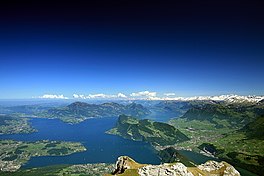 View of Lake Lucerne from the Pilatus View of Lake Lucerne from the Pilatus | |
     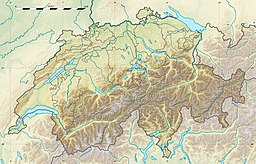 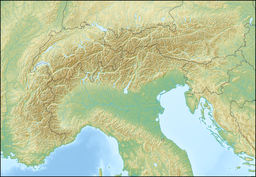 | |
 map map | |
| Location | Central Switzerland |
| Coordinates | 47°01′10″N 8°24′04″E / 47.0194°N 8.4011°E / 47.0194; 8.4011 |
| Lake type | freshwater fjord, recent regulation |
| Primary inflows | |
| Primary outflows | Reuss |
| Catchment area | 2,124 km (820 sq mi) |
| Basin countries | Switzerland |
| Max. length | 30 km (19 mi) |
| Max. width | 20 km (12 mi) |
| Surface area | 113.6 km (43.9 sq mi) |
| Average depth | 104 m (341 ft) |
| Max. depth | 214 m (702 ft) |
| Water volume | 11.8 km (2.8 cu mi) |
| Residence time | 3.4 years |
| Shore length | 143.7 km (89.3 mi) |
| Surface elevation | 434 m (1,424 ft) |
| Frozen | in the 17th and 19th century; Lucerne Bay and Lake Alpnach in 1929 and 1963 |
| Islands | Altstatt-Insel |
| Sections/sub-basins | |
| Settlements | |
| Website | http://www.lakelucerne.ch |
| References | |
| Shore length is not a well-defined measure. | |
Lake Lucerne (German: Vierwaldstättersee, literally 'Lake of the four forested settlements' (in English usually translated as forest cantons), French: lac des Quatre-Cantons, Italian: lago dei Quattro Cantoni) is a lake in central Switzerland and the fourth largest in the country.
Geography
The lake has a complicated shape, with several sharp bends and four arms. It starts in the south–north bound Reuss Valley between steep cliffs above the Urnersee from Flüelen towards Brunnen to the north before it makes a sharp bend to the west where it continues into the Gersauer Becken. Here is also the deepest point of the lake with 214 m (702 ft). Even further west of it is the Buochser Bucht, but the lake sharply turns north again through the narrow opening between the Unter Nas (lower nose) of the Bürgenstock to the west and the Ober Nas (upper nose) of the Rigi to the east to reach the Vitznauer Bucht. In front of Vitznau below the Rigi the lake turns sharply west again to reach the center of a four-arm cross, called the Chrütztrichter (Cross Funnel). Here converge the Vitznauer Bucht with the Küssnachtersee from the north, the Luzernersee from the west, and the Horwer Bucht and the Stanser Trichter to the south, which is to be found right below the northeast side of the Pilatus and the west side of the Bürgenstock. At the very narrow pass between the east dropper of the Pilatus (called Lopper) and Stansstad the lake reaches its southwestern arm at Alpnachstad on the steep southern foothills of the Pilatus, the Alpnachersee. The lake drains its water into the Reuss in Lucerne from its arm called Luzernersee (which literally translates as Lake of Lucerne).
The entire lake has a total area of 114 km (44 sq mi) at an elevation of 434 m (1,424 ft) a.s.l., and a maximum depth of 214 m (702 ft). Its volume is 11.8 km. Much of the shoreline rises steeply into mountains up to 1,500 m above the lake, resulting in many picturesque views including those of the mountains Rigi and Pilatus.
The Reuss enters the lake at Flüelen, in the part called Urnersee (Lake of Uri, in the canton of Uri) and exits at Lucerne. The lake also receives the Muota at Brunnen, the Engelberger Aa at Buochs, and the Sarner Aa at Alpnachstad.
It is possible to circumnavigate the lake by train and road, though the railway route circumvents the lake even on the north side of the Rigi via Arth-Goldau. Since 1980, the A2 motorway leads through the Seelisberg Tunnel in order to reach the route to the Gotthard Pass in just half an hour in Altdorf, Uri right south of the beginning of the lake in Flüelen.
Steamers and other passenger boats ply between the different villages and towns on the lake. It is a popular tourist destination, both for native Swiss and foreigners, and there are many hotels and resorts along the shores. In addition, the meadow of the Rütli, traditional site of the founding of the Swiss Confederation, is on the Urnersee shore. A 35 km commemorative walkway, the Swiss Path, was built around the Lake of Uri to celebrate the country's 700th anniversary in 1991.
Archaeologists surveying the lake-bed (during the construction of a pipeline) from 2019 to 2021 found the remains of a Bronze Age village with artifacts dating to around 1000 BC. Later, the new findings indicated that the area was settled 2,000 years earlier than historians previously thought.
Lake Lucerne borders on the three original Swiss cantons of Uri, Schwyz, and Unterwalden (which today is divided into the cantons of Obwalden and Nidwalden), as well as the canton of Lucerne, thus the name Vierwaldstättersee (lit.: Lake of the Four Forested Settlements). Many of the oldest communities of Switzerland are along the shore, including Küssnacht, Weggis, Vitznau, Gersau, Brunnen, Altdorf, Buochs, and Treib.
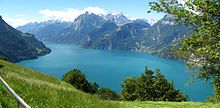
Lake Lucerne is singularly irregular and appears to lie in four different valleys, all related to the conformation of the adjoining mountains. The central portion of the lake lies in two parallel valleys whose direction is from west to east, the one lying north, the other south of the ridge of the Bürgenstock. These are connected through a narrow strait, scarcely one kilometre wide, between the two rocky promontories called respectively Unter Nas and Ober Nas (Lower and Upper Nose). It is not unlikely that the southern of these two divisions of the lake—called Buochser Bucht—formerly extended to the west over the isthmus whereon stands the town of Stans, thus forming an island of the Bürgenstock. The west end of the main branch of the lake, whence a comparatively shallow bay extends to the town of Lucerne, is intersected obliquely by a deep trench whose south-west end is occupied by the branch called Alpnachersee, while the north-east branch forms the long arm of Küssnacht, Küssnachtersee. These both lie in the direct line of a valley that stretches with scarcely a break in between the Uri Alps and the Emmental Alps. At the eastern end of the Gersauer Becken, where the containing walls of the lake-valley are directed from east to west, it is joined at an acute angle by the arm of Uri, or the Urnersee, lying in the northern prolongation of the deep cleft that gives a passage to the Reuss, between the Uri Alps and the Glarus Alps.

The Urnersee occupies the northernmost and deep portion of the great cleft of the Reuss Valley, which has cut through the Alpine ranges from the St Gotthard Pass to the neighbourhood of Schwyz. From its eastern shore the mountains rise in almost bare walls of rock to a height of from 3,000 to 4,000 ft (910 to 1,220 m) above the water. The two highest summits are the Fronalpstock and the Rophaien (2078 m). Between them the steep glen or ravine of the Riemenstaldener Tal descends to Sisikon, the only village with Flüelen right on the shore on that side of the Urnersee. On the opposite or western shore, the mountains attain still greater dimensions. The Niederbauen Chulm is succeeded by the Oberbauenstock, and farther south, above the ridge of the Scharti, appear the snowy peaks of the Gitschen and the Uri Rotstock (2,928 m). In the centre opens the Reuss Valley, backed by the rugged summits of the Urner and Glarner Alps.
The breadth of these various sections of the lake is very variable, but is usually between one and two miles (3 km). The lake's surface, whose mean height above the sea is 434 metres, is the lowest point of the cantons of Uri, Obwalden and Nidwalden. Originally the lake was susceptible to variations in level and flooding along its shoreline. Between 1859 and 1860, the introduction of a needle dam in the Reuss in the city of Lucerne, just upstream from the Spreuerbrücke, allowed the lake level to be stabilised.
The culminating point of the lake's drainage basin, as well as Central Switzerland, is the Dammastock at 3,630 metres above sea level.
Name
The name of Vierwaldstättersee is first used in the 16th century. Before the 16th century, the entire lake was known as Luzerner See "Lake Lucerne", as remains the English (and partly Italian, as Lago di Lucerna) usage. The (three) "Waldstätte(n)" (lit.: "forested sites/settlements", in English usually translated as forest cantons) since the 14th century were the confederate allies of Uri, Schwyz and Unterwalden. The notion of "Four Waldstätten" (Vier Waldstätten), with the addition of the canton of Lucerne, is first recorded in the 1450s, in an addition to the "Silver Book" of Egloff Etterlin of Lucerne.
The nine different parts of the lake have individual designations:
- Urnersee ("Lake of Uri"): The first part of the lake, at the mouth of the Reuss between Flüelen and Brunnen.
- Gersauer Becken ("Basin of Gersau") next to Gersau below the Rigi massif is the deepest part of the lake.
- Buochser Bucht ("Bay of Buochs"): The bay of Bouchs, where the Engelberger Aa enters the lake.
- Vitznauer Bucht ("Bay of Vitznau"): The part between the Bürgenstock and Rigi.
- Alpnachersee ("Lake of Alpnach"): the almost separate, southern arm below the southern mountainside of Pilatus near Alpnach.
- Stanser Trichter ("Funnel of Stans"): The part north of the Pilatus, west of Bürgenstock, and in front of Hergiswil and Stansstad.
- Küssnachtersee ("Lake of Küssnacht"): The most northern arm, west of the Rigi with Küssnacht SZ at its northern end.
- Chrütztrichter ("Cross Funnel"): The meeting point of Stanser Trichter, Luzernersee, Küssnachtersee, and Vitznauer Bucht.
- Luzernersee ("Lake of Lucerne"): in German usage now limited to the bay at Lucerne as far as Meggenhorn, with its effluence of the Reuss.
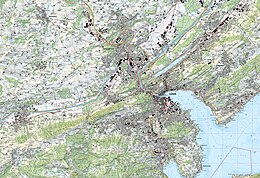




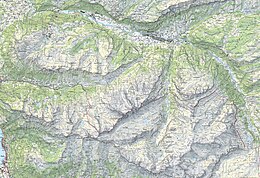
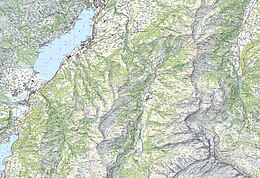
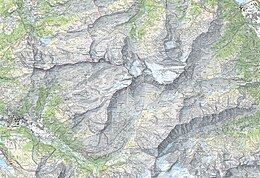
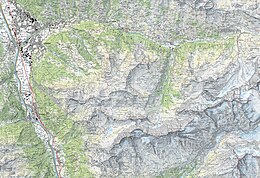
Settlements
| Left shore | Right shore |
|---|---|
|
|
| Luzern | |
- At the entry of the Reuss: the western, later southern shore.
Navigation

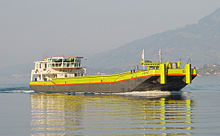
The lake is navigable, and has formed an important part of Switzerland's transport system for many centuries, and at least since the opening of the first track across the Gotthard Pass in 1230. This trade grew with the opening of a new mail coach road across the pass in 1830. This road had its northern terminus at Flüelen at the extreme eastern end of the lake, and the lake provided the only practical onward link to Lucerne, and hence the cities of northern Switzerland and beyond.
Whilst the development of Switzerland's road and rail networks has relieved the lake of much of its through traffic, it continues to be used by a considerable number of vessels, both private and public. Much of this usage is tourist or leisure oriented, but the lake continues to provide practical public and cargo transport links between the smaller lakeside communities.
Passenger boats of the Schifffahrtsgesellschaft des Vierwaldstättersees (SGV) provide services on the lake, including many run by historic paddle steamers. The SGV serves 32 places along the shore of the lake, with interchange to both main line and mountain railways at various points. Under separate management, the Autofähre Beckenried-Gersau provides a car ferry service between Beckenried, on the south bank of the lake, and Gersau on the north.
Cargo barges, to a local design known as Nauen, are still used on the lake. Some have been converted for use as party boats. Other barges are used by the gravel dredging industry that operates on the lake, using large dredgers to obtain sand and gravel for use in the construction industry.
Cultural references

Beethoven's Moonlight Sonata derives its name from an 1832 description of the first movement by poet and music critic Ludwig Rellstab, who compared it to moonlight shining upon Lake Lucerne.
Gioacchino Rossini uses this in his William Tell Overture Section A: Sunrise over the Alps.
Rowing
Lake Lucerne has twice been used as a venue for the European Rowing Championships: in 1908 and then in 1926. The nearby Rotsee has since 1933 been used for rowing regattas instead.
Tourism

On the way south, the English discovered the mountains of central Switzerland. Several spa and bathing resorts such as Weggis or Gersau were created. In 1871, the very first rack railway in Europe, the Vitznau-Rigi Railway, was opened. In 1889 the steepest cog railway in the world was built from Alpnachstad to Mount Pilatus. Mark Twain described an ascent to the Rigi, which led to the blossoming of Swiss tourism in the United States in the 19th century. One of the largest steamship fleets in Europe operates with five steamships on Lake Lucerne.
In the area surrounding the lake and on terraces at medium height (for example Morschach and Seelisberg) there are numerous places for tourists. The Rigi, Pilatus, the Bürgenstock, the Stanserhorn, the Buochserhorn, and the two legends, the Urirotstock and the Fronalpstock are attractive panoramic mountains near Lake Lucerne. Most of them can be reached by mountain railways, some of which have their valley station near boat stations on the lake.
There are numerous locations on the lake that are important in Swiss cultural and tourism history: Rütli, Tellsplatte, Tell Chapel, Carving Tower of Stansstad, Neu-Habsburg, Schillerstein, Treib, Astrid Chapel (Küssnacht) and Meggenhorn Castle.
Watersports
Different sports are possible in some separate areas due to the water and wind conditions. The lake is accessible from boat and yacht harbors, to lake resorts and pools (e.g. the Lido pool in Lucerne, built in 1929 by Arnold Berger). Therefore, the lake can be easily accessible from both shores. The See-Club Luzern was founded in 1881, which is now Switzerland's largest rowing club, as well as the Reuss Luzern rowing club (Ruderclub Reuss Luzern) in 1904. The Lucerne Yacht Club (Yachtclub Luzern) has existed since 1941 and has been running since 1966 a boathouse and buoy field on Churchill-Quai in Lucerne.
The Brunnen water sports club (Wassersportclub Brunnen), founded in 1958, held on Lake Lucerne in the first years of its existence international motorboat races and water ski championships. In 1965 the association chose a new name for the club: Lake Lucerne Water Sports Club (Wassersport-Club Vierwaldstättersee). The Central Switzerland Motorboat Club (Motorbootclub Zentralschweiz) was established in 1980 and the Hergiswil Water Sports Club (Wassersportclub Hergiswil) in 1986. SchweizMobil has created a canoe tour across Lake Lucerne between Brunnen and Gersau. Due to the wind in the Reuss Valley, the southern part of Lake Uri between the campground at Gruonbachstrand in Flüelen and Isleten is a center of windsurfing.
Diving
There are about ten places where you can dive without a boat in Lake Lucerne. The water is rather chilly all year round and therefore mostly very clear. In Lake Uri, at Sisikon, one can dive to a fragmented steep vertical wall, at the northern portal of the Schieferneggtunnel. The Lediwrack Bruno lies in front of Brunnen at a depth of 15 meters. Other well-known diving spots are in front of Vitznau, Weggis, Gersau and Hergiswil.
Submerged munitions
The Swiss Armed Forces historically used Lake Lucerne as a dumping ground for old munitions, with an estimated 3,300 tonnes of munitions currently submerged in the lake. The Swiss Defence Department has offered a prize of 50,000 francs (£45,000) for the best proposal to safely remove the munitions.
Notes and references
Notes
- The weir in Lucerne keeps the water level 2–3 m (6 ft 7 in – 9 ft 10 in) above the natural average, see Canton of Lucerne, department of traffic and infrastructure (2008):Die Regulierung des Vierwaldstädtersees – Der Ausbau der Reusswehranlage in Luzern (PDF) Archived 14 May 2014 at the Wayback Machine
References
- ^ Hans Stadler: Vierwaldstättersee in German, French and Italian in the online Historical Dictionary of Switzerland, 27 February 2013.
- Archived at Ghostarchive and the Wayback Machine: Switzerland - Lake Lucerne - Aerial Drone Video in 4K, retrieved 10 May 2021
- ^ Davis-Marks, Isis. "3,000-Year-Old Submerged Settlement Discovered in Switzerland". Smithsonian Magazine. Retrieved 7 May 2021.
- ^ John Ball, The Alpine guide, Central Alps, p. 153, 1866, London
- 1:25,000 topographic map (Map). Swisstopo. Retrieved 27 July 2014.
- for the translation "forest canton" see e.g. Encyclopedia Britannica, 7th ed., vol. 21 (1842), p. 44.
- "Vierwaldstättersee: Über sieben Becken..." (PDF). BeobachterNatur (in German). No. 8/2011. Zurich, Switzerland: Beobachter. 7 October 2011. Retrieved 7 October 2016.
- "Paddle Steamboat Uri" (PDF). American Society of Mechanical Engineers. 5 September 2008. Archived from the original (PDF) on 3 September 2014. Retrieved 11 September 2012.
- "Geschichte SGV" [SGV History] (in German). SGV. Retrieved 12 September 2012.
- "WABAG Kies AG" (in German). WABAG Kies AG. Retrieved 10 September 2012.
- "Arnold & Co. AG" (in German). Arnold & Co. AG. Retrieved 11 September 2012.
- "Event Information". International Rowing Federation. Retrieved 30 June 2018.
- "Event Information". International Rowing Federation. Retrieved 30 June 2018.
- "Switzerland offers prize money to get munition out of lakes". BBC. Retrieved 31 August 2024.
External links
- Waterlevels Lake Lucerne at Brunnen
- Waterlevels Lake Lucerne at Lucerne
- Lake Lucerne Region
- Nidwalden Tourism
- Coolidge, William Augustus Brevoort (1911). "Lucerne, Lake of" . Encyclopædia Britannica. Vol. 17 (11th ed.). pp. 97–98.
| Lakes of Switzerland | ||
|---|---|---|
| Major lakes |
|  |
| Lists | ||
- Lake Lucerne
- Lakes of Switzerland
- Lakes of the canton of Uri
- Lakes of the canton of Schwyz
- Lakes of Obwalden
- Lakes of Nidwalden
- Lakes of the canton of Lucerne
- Reuss basin
- Tourist attractions in the canton of Uri
- Tourist attractions in Nidwalden
- Nidwalden–Uri border
- Nidwalden–Obwalden border
- Lucerne–Nidwalden border
- Lucerne–Schwyz border
- Schwyz–Uri border
- Nidwalden–Schwyz border